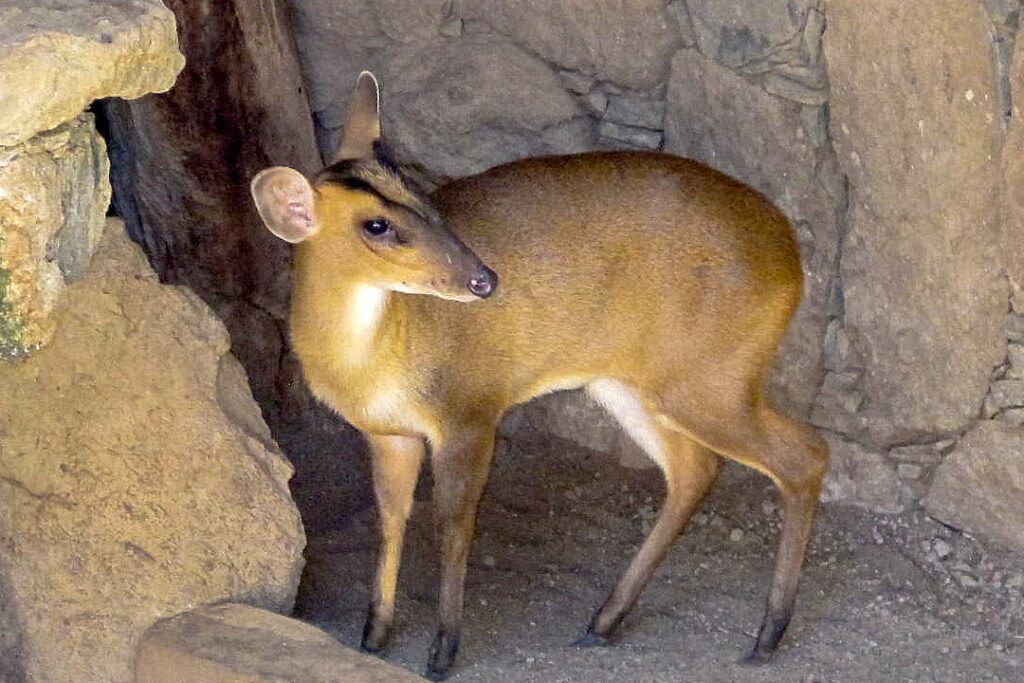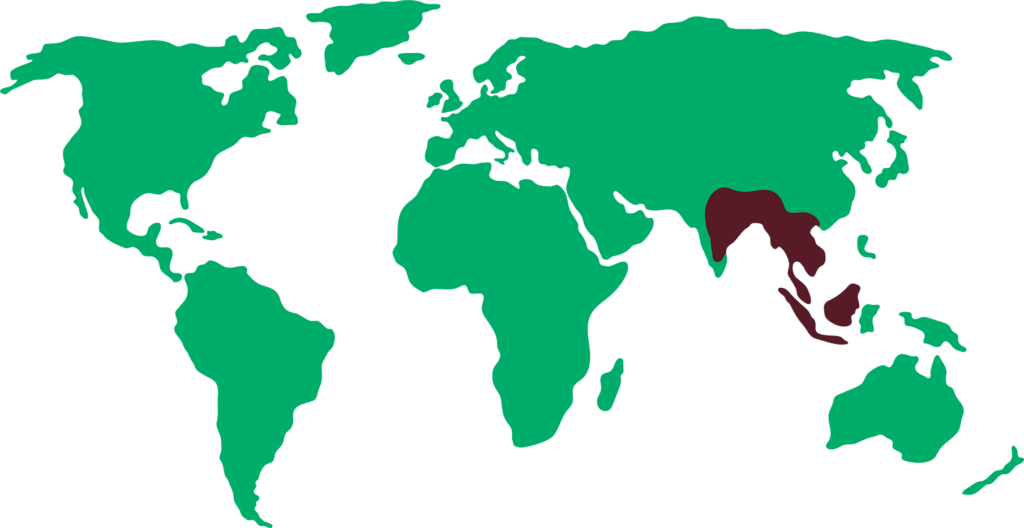SOUTHERN RED MUNTJAC
Muntiacus muntjak

LENGTH

70 cm
WEIGHT

35 kg
LIFESPAN

17 years
The southern red muntjac, also known as the Indian muntjac or the common muntjac, is one of the smallest deer species native to southeast Asia.
General characteristics
Muntjacs have a short but very soft and dense brown coat that covers the entire body, except for the ears where they have very little hair. Their face is darker and smaller compared to the rest of the body which is of a bulkier size.
They have unique characteristics, such as canine tusks and small antlers. Males are larger and more muscular and have small subtracted antlers. Females, on the other hand, have small bony protrusions on the head with patches of hair on top.
In males the canines are longer, up to 25 cm in length, and clearly visible; while in females they are small and usually covered by the upper lip.
Feeding
Muntjacs are omnivorous and feed on herbs, fruit, bird eggs, sprouts, seeds, grass and small animals.
Behaviour
They are active both day and night. These deer graze alone, although sometimes they form small herds of 4-5 individuals.
They are not usually very aggressive, but they like to keep separate territories and mark them with secretions from their scent glands. They are usually tolerant of other muntjacs, although fights over a female may occur. Males fight with their antlers and can cause serious injuries.
The bark they emit is an alarm call to warn other nearby muntjacs of a possible threat. Their calls are regularly heard at dawn and dusk, and may also be a way of communication. Females and fawns squeal when communicating with each other.
Reproduction
Muntjacs are polygamous and they don´t have a particular breeding season. Gestation period lasts up to 230 days, during which a single fawn and, occasionally twins, are born.
The fawns are born in dense vegetation, where they remain hidden until they can move with the mother. After 6 months, they leave the mother to establish its own territory.
Threats
Their population decline is due to the hunt for their meat and fur. They are the hunting target of farmers because they are considered a threat to crop fields.
Distribution
They can be found in Southeast and South Asia, from Pakistan to India and Nepal. They live in tropical rainforests, among dense vegetation, monsoon forests and mountainous areas. They prefer to be near water.

Did you know?
They are able to detect odors left by other animals with their sense of smell.
Muntjacs shed their antlers every year.
They are agile and can jump up to 2 metres high to escape from predators.
Conservation status
